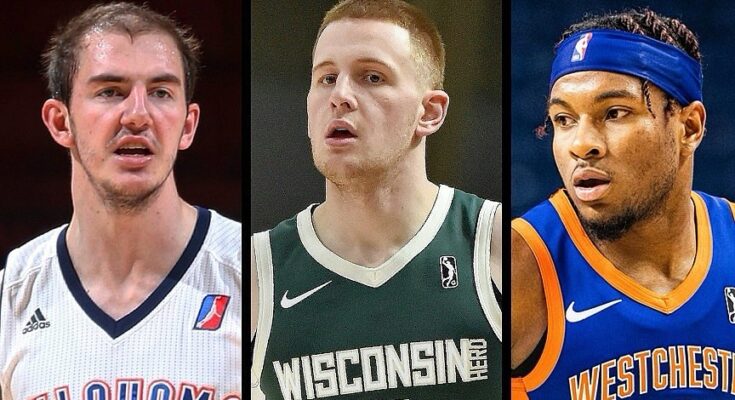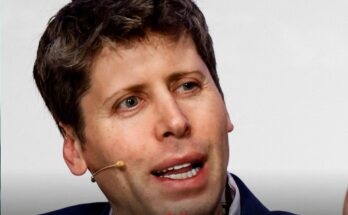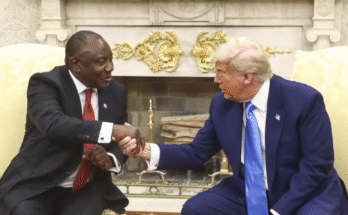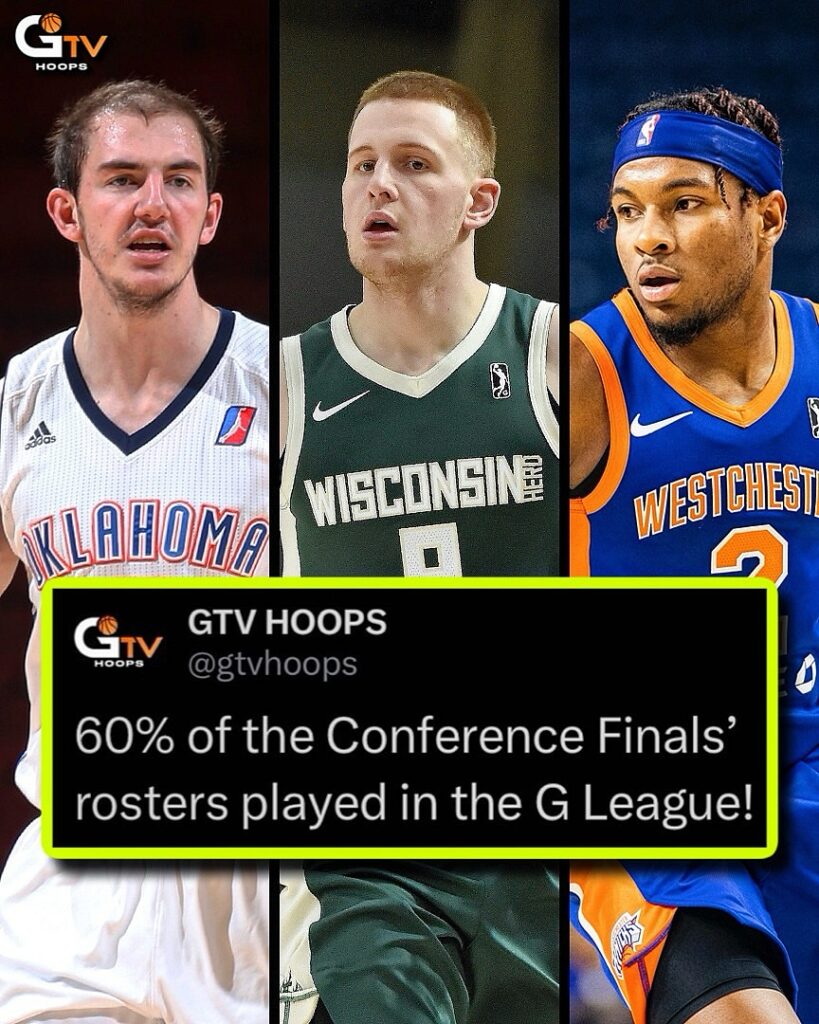
The NBA Conference Finals are often viewed as the stage where stars shine brightest and legacies are defined. But this year, beneath the dazzling lights and viral highlights, there’s a deeper narrative at play—a quiet revolution that’s been building for over a decade: the rise of the G League as a true pipeline to NBA greatness.
In a remarkable stat that speaks volumes about the evolution of player development, 60% of the players in the 2024–25 NBA Conference Finals spent time in the NBA G League. Not including current Two-Way contracts, 36 of the 60 rostered players—across the Timberwolves, Thunder, Pacers, and Knicks—have G League experience. That’s not a trend. That’s a transformation.
A Development Pipeline Realized
Once seen as little more than a minor-league sideshow or a holding ground for fringe prospects, the NBA G League is now an integral part of team-building strategy. What was once viewed as a consolation stop is now a respected route—one that teaches players how to be professionals, how to adapt to systems, and how to seize their moments when called upon.
Just look at the raw numbers:
- Minnesota Timberwolves: 10 players with G League experience
- Oklahoma City Thunder: 9 players
- Indiana Pacers: 9 players
- New York Knicks: 8 players
These are not end-of-bench players, either. Many are key rotation pieces, trusted to deliver in the highest-pressure situations of the season. In fact, players like Naz Reid, Isaiah Joe, Jalen Brunson, and Andrew Nembhard—all former G Leaguers—have become postseason heroes, reminding the world that talent, when nurtured properly, can flourish anywhere.
Grit, Grind, and Growth
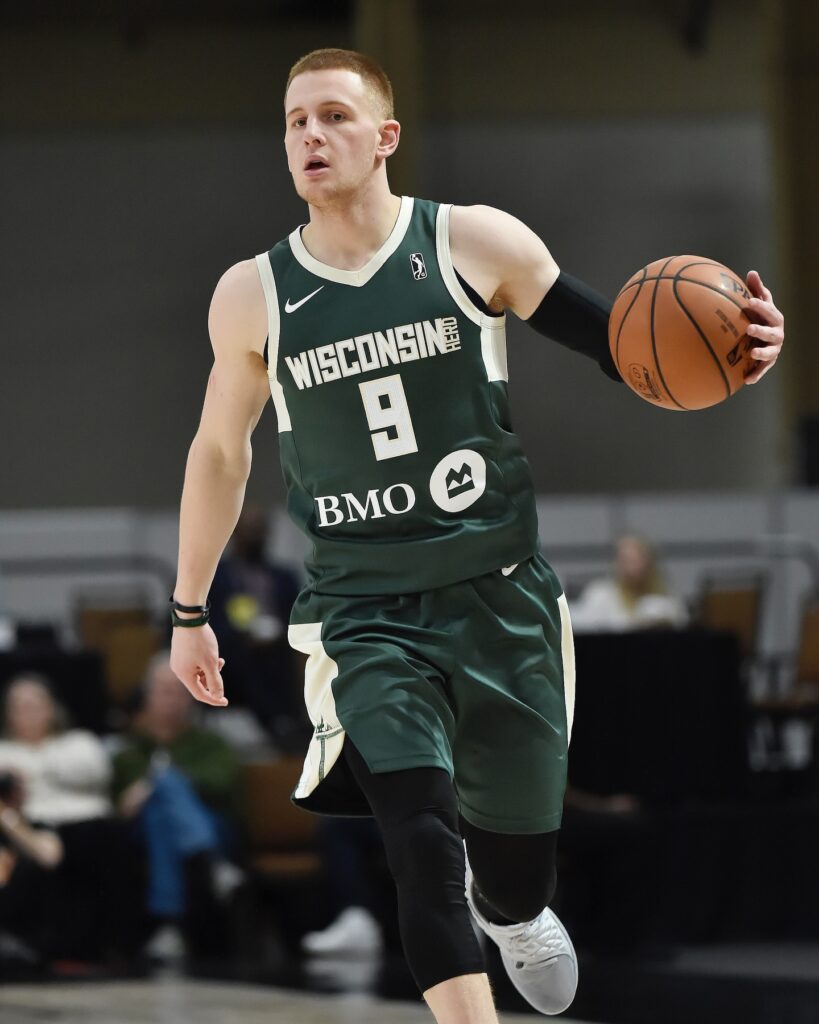
G League alum bring more than just talent—they bring edge. Many of these players were undrafted, overlooked, or traded early in their careers. That time in the G League instilled a certain kind of resilience.
Take Jalen Brunson, now the emotional and statistical engine of the Knicks. Before his rise to All-NBA status, he had a stint in the G League, refining his craft and earning trust. Or Isaiah Joe of the Thunder, whose shooting touch has become a weapon in OKC’s dynamic offense—after a critical stretch in the G League gave him the minutes he couldn’t find early in his career.
Then there’s Naz Reid, Minnesota’s versatile big man and the NBA’s Sixth Man of the Year. Reid went undrafted in 2019 and spent considerable time with the Iowa Wolves. He now plays massive crunch-time minutes for a team that’s knocking on the door of the NBA Finals.
Coaches Who Took the Same Route
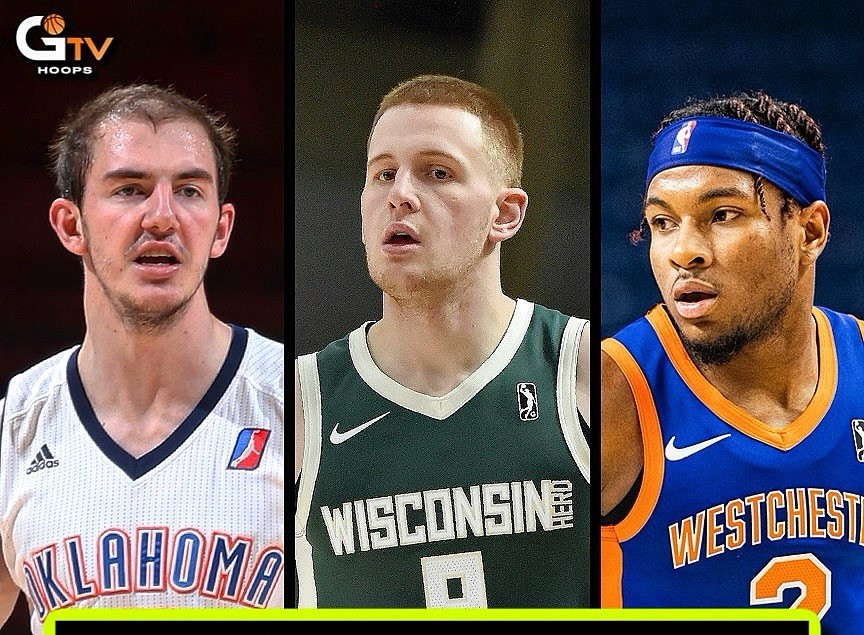
It’s not just the players who came through the G League. Two of the four Conference Finals coaches—Chris Finch of the Timberwolves and Mark Daigneault of the Thunder—cut their teeth in the G League as well.
- Finch led the Rio Grande Valley Vipers to a title and revolutionized offensive spacing before it became mainstream in the NBA.
- Daigneault helmed the Oklahoma City Blue and helped develop much of OKC’s current core before being promoted to the Thunder’s head coach position.
Their stories reinforce the idea that the G League isn’t a lesser version of the NBA—it’s a lab for innovation and leadership.
NBA Front Offices Are Taking Note

In the modern NBA, talent acquisition is no longer just about lottery picks and splashy trades. It’s about finding undervalued assets, developing them, and building a winning culture from the ground up. And that’s where the G League has become indispensable.
Teams like the Thunder and Pacers have leveraged the G League not just to rehab injured players, but to groom young prospects in their systems, ensuring continuity and faster development. It’s no coincidence that both teams are now thriving behind deep, cohesive rosters filled with players who know the system—and know what it means to grind for their shot.
Changing the Narrative
It’s easy to look at a Conference Finals box score and focus on the All-Stars. But the deeper truth is this: the modern NBA is built from the bottom up, not the top down. The G League isn’t a stepping stone anymore—it’s a cornerstone.
That 60% figure isn’t an outlier. It’s a sign of what’s working.
It tells us that development isn’t linear. That greatness can come from unlikely places. And that with the right infrastructure, opportunity, and coaching, players once labeled as “projects” can evolve into postseason difference-makers.
Looking Ahead
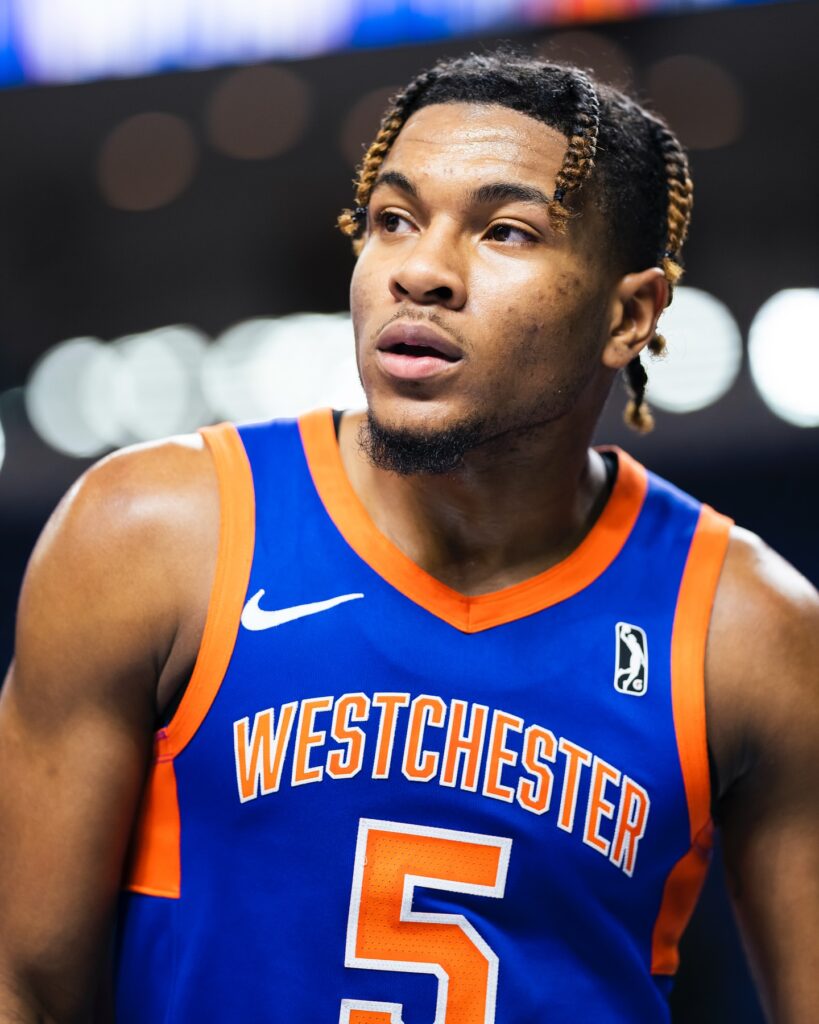
With the continued growth of the G League Ignite program, international expansion, and enhanced visibility through digital broadcasts and partnerships, the league’s influence is only expected to grow. The next generation of NBA stars may very well emerge not just from Duke or Kentucky, but from Sioux Falls, Santa Cruz, and Fort Wayne.
The numbers tell a story. The G League is no longer an alternative route—it’s part of the main highway to the NBA’s highest levels. And in this year’s Conference Finals, that investment is paying off in a big way.
From the shadows to the spotlight, the G League era has arrived.
